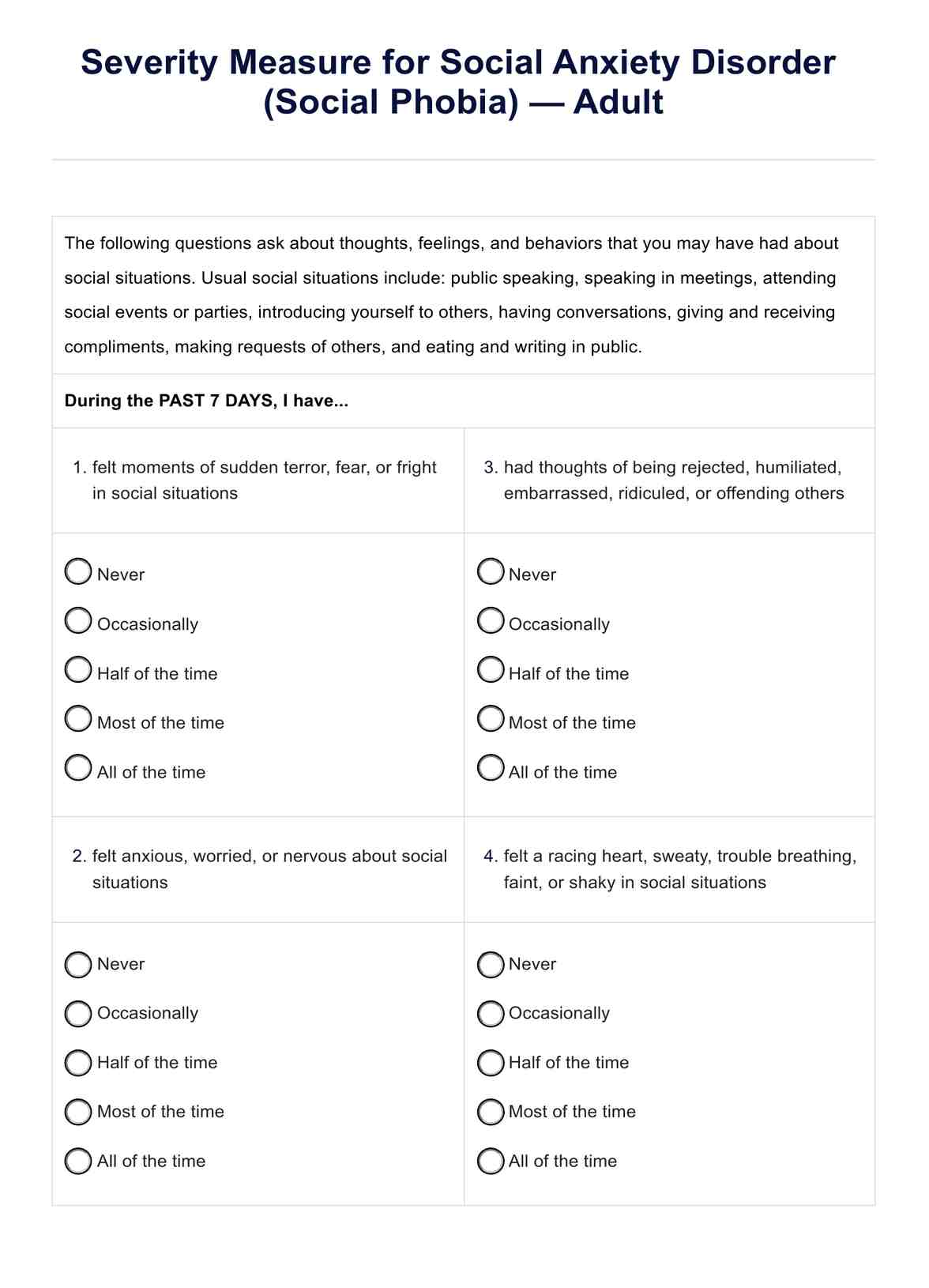While there is no cure for social anxiety disorder, effective treatments can significantly reduce symptoms and improve quality of life, allowing individuals to manage the condition successfully.

Severity Measure for Social Anxiety Disorder
Explore the Severity Measure for Social Anxiety Disorder to assess the intensity of social anxiety symptoms. Download our template for precise evaluation and treatment planning.
Use Template
Severity Measure for Social Anxiety Disorder Template
Commonly asked questions
Social anxiety disorder often begins in the early teenage years, although it can start in childhood or early adulthood.
No, social anxiety disorder is more intense and debilitating than shyness and involves significant fear, anxiety, and avoidance of social situations that interfere with daily functioning.
EHR and practice management software
Get started for free
*No credit card required
Free
$0/usd
Unlimited clients
Telehealth
1GB of storage
Client portal text
Automated billing and online payments











